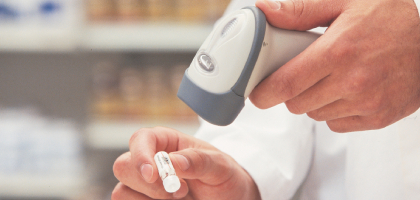
Insights
Clean Pharmaceutical Supply Chain with Full Traceability
Clean Pharmaceutical Supply Chain
Surveys show that the counterfeit and substandard drugs, which cause the death of tens of thousands of people, largely affect young children living in poor countries.
Low-quality medicines are becoming an industry with an estimated $ 200 billion annually, while also increasing the risk of antimicrobial resistance. According to estimates, 10 percent of all drugs in the world are counterfeit drugs.
Drug Traceability Is Not Just About Safety
Traceability of a product means that it can be located throughout the entire production and distribution process cycle. Therefore, traceability plays a key role in combating counterfeit health products. The most important benefits of traceability are to maintain the effectiveness of drugs, to increase the quality of life of patients and to ensure that counterfeit, substandard or recall drugs affect the pharmaceutical industry at a minimum level. However, being able to end-to-end follow the digital supply network increases effectiveness and minimizes waste. Also, it improves the cooperation in the supply chain and keeps it safe in case of any crisis.
End-to-End Traceability Across the Pharmaceutical Supply Chain
So, how does end-to-end traceability work? The most important part of the process is to authenticate the product itself. If the drug is counterfeit or substandard, there is no point in following the drug along the supply chain. Product authentication and serialization are key points for effective traceability. First of all, product authentication technology is an essential part of a safe pharmaceutical supply chain, and there are many ways to do this.
Spectrometer analyzers can verify the actual ingredients and dosage of product, but other methods include specially designed coatings, chemical and molecular markers, and micro tags. The latter options can be applied at any and all levels—from the ingredients themselves all the way to the finished drugs and even the packaging. Serialization involves adding a unique identifier to sellable units of the product, so that it can be identified and traced throughout the supply chain.
Any drug supply chain is vulnerable to product quality problems, and there is always a chance for variance due to ingredient issues, substitution, contamination, formulation, or just plain human error. Many companies have tried to leverage electronic data interchange (EDI) across the network to address some of these issues. However, as a technology, EDI is woefully inadequate in addressing today’s supply network requirements.
It is still not possible to process much of the product quality related data being consumed through the various Internet of things sensors deployed throughout the network. So, while EDI itself will still remain in the picture for years to come, a supply network platform is needed that will enable continuous digital business processes to provide full traceability and the assurance of product quality and safety.
Identify the Root Cause of Quality Issues
An effective traceability capability should allow for a root cause analysis at the process level to be performed, which means network level master data management is needed that is extensible across multiple data types and geographic regions.
Over time, a network platform will become the backbone for the digital twin, including a multi-party ledger (i.e., a blockchain at the network level), which also provides permission-based security between trading partners. Such an architecture also opens up the potential to add artificial intelligence (AI) into the mix. A multi-party intelligent agent can operate across the network targeted at improving key metrics such as achieving on-time in-full order fulfillment.
Traceability - The Basis for Effective Execution
When there is a problem with a drug, any missteps in handling the crisis are costly in a social media-driven world where brand damage can happen quickly. In times of crisis, pharmaceutical companies need to respond quickly by:
• Acting immediately with great transparency
• Rapidly identifying the scope of the problem
• Locating the specific drugs
• lots, and impacted locations and customers
• Initiating the recall and executing the recall logistics
• Identifying the source of the problem and fixing it
• Instilling confidence in their marketplace and with consumers
To do all this effectively, more control over the supply network is required. Leveraging network-based technology that tracks the full chain-of-custody for every item from start to finish provides visibility into supply chains with a way to effectively track products, intermediates, and raw materials in real time, from their source, across trading partners, all the way to the clinics, hospitals, and pharmacies who need them.
By rapidly extracting only the affected product in a recall, and at the precise locations in the supply chain that are affected, companies can minimize the impact on consumers and healthcare providers, protect their reputation, and minimize costs. Another critical factor is knowing exactly what and how much product needs to be replaced to quickly resupply to locations with minimum business impact.
In addition, you can get detailed information about HIPAA compliant websites by reading our article titled How Do You Make Your Website HIPAA Compliant? See you on different topics.
Source: https://bit.ly/3ejOrA4









